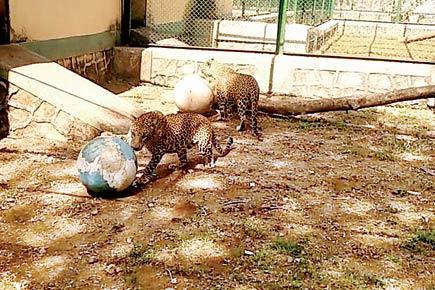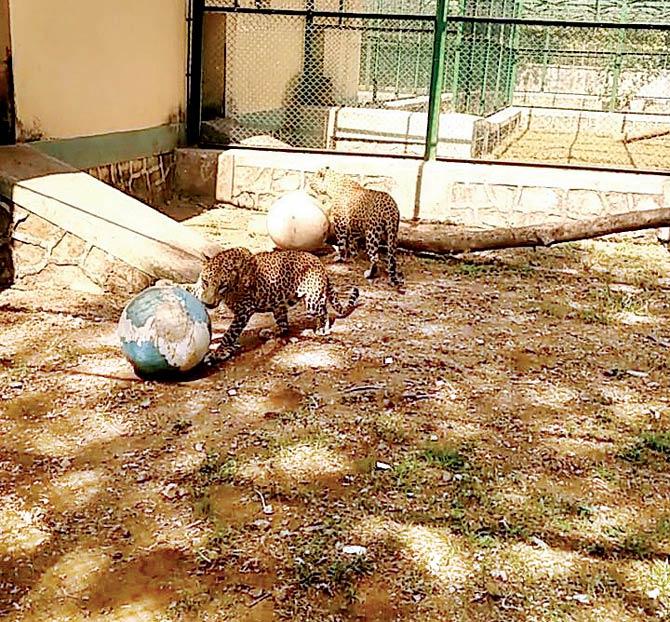Ever since the chubby wild cats were moved from constricted cages to larger enclosures with playthings like tree trunks and exercise balls, the cats have become fit as a fiddle

At least the leopards at Sanjay Gandhi National Park have managed to keep their new year’s resolution to lose weight. After they were shifted from constricted cages to larger enclosures last year, many of the big cats have lost their flab and are much healthier, thanks to the increased space and new toys with which to play and exercise.
ADVERTISEMENT

The leopards especially enjoy playing with the massive exercise balls that were introduced in their enclosures a month ago
“Over a year ago, when the leopards were in the old cages, they had less place to move. As there was not much daily exercise, some of them had become obese, and that is why the new enclosures were designed. In the past year, many of the leopards have become more active, as they have much more space and this has helped some of them to lose the extra fat on their body,” said Assistant Conservator of Forest Santosh Saste, in-charge of SGNP’s leopard rescue centre.
While the animals are still held in the older cages — males and females separately — at night, they are released into the enclosures in the morning and evening. To encourage them to be more active, the park officials even supplied the enclosures with playthings such as tree trunks for the leopards to climb, raised wooden platforms, which they can leap onto. But it the exercise balls that are the most popular with the leopards ever since they were introduced last month.
“In order to keep them more active, the enclosures have been designed resembling their natural habitat in the forest. In the new enclosures, there are wooden platforms and tree trunks on which the leopards play in the morning and evening. This has helped a lot, as they now appear more athletic and have become much more active than a year ago. Over a month ago, we even introduced huge exercise balls in their enclosures, and the leopards love playing with these,” said Shailesh Deore, superintendent of the park’s tiger and lion safari.
At present, there are 17 leopards in captivity at SGNP, and the authorities maintain close scrutiny of their health, including a proper diet chart. They are fed chicken and beef on alternate days. Males are fed 3 kg of food every day, while females get 2-kg portions. Once a week (on Thursdays), the leopards are made to fast, in order to aid digestion. They are regularly checked, and if any illness is suspected, the veterinarian is called immediately to attend to the animal.
“I have been looking after the animals for more than three years, and when the leopards were in small cages, they had gained a lot of weight, but after the new enclosures were opened, the same animals have become more active, losing the fat around their belly and neck. Now, they play every day — climb the tree trunks, jump on the wooden platforms and love to play with the exercise balls,” said a caretaker.
 Subscribe today by clicking the link and stay updated with the latest news!" Click here!
Subscribe today by clicking the link and stay updated with the latest news!" Click here!






